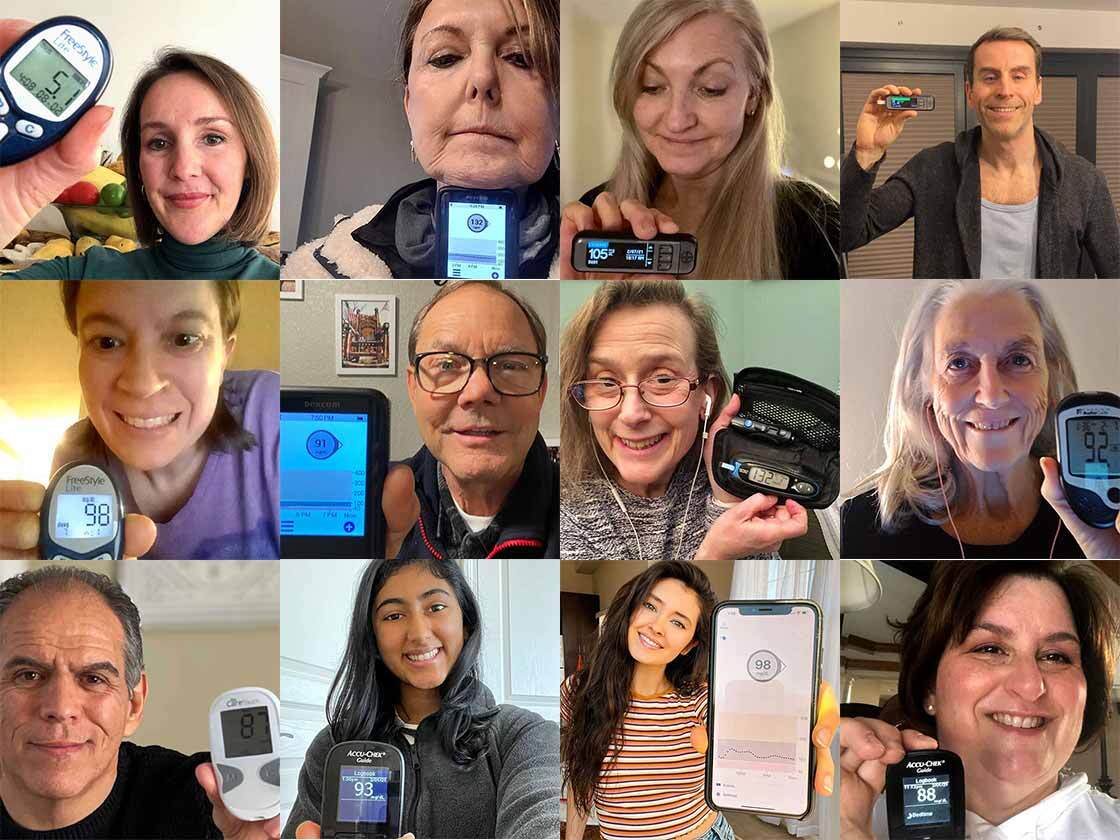Paul is a competitive athlete and running coach who has been living with type 1 diabetes and celiac disease since he was 5 years old.
In his 40’s, Paul became concerned about an elevated fasting blood glucose, an A1c of 7.1%, weight gain, high cholesterol, and high blood pressure. He also began experiencing diabetic neuropathy that gave him pins-and-needles in his feet.
Even with Paul’s regimented half-marathon training schedule and meticulous diet, he found that exercising frequently did not prevent him from developing these unfortunate diabetes complications.
How Paul the Endurance Runner Previously Ate
Paul knew there must be a way to improve his diabetes health and avoid these complications into the future, so he began eating a low-carbohydrate diet in combination with endurance training.
His typical low-carbohydrate meals included a green smoothie at breakfast, a salad with chicken or fish for lunch, and a similar low-carbohydrate meal for dinner. He allowed himself 25–50 grams of carbohydrate per day, which came mainly from non-starchy vegetables.
As part of his exercise regimen, Paul ran 3 times a week and raced in 2 half-marathons per year. This training and competition protocol left Paul feeling severely fatigued, in addition to early diabetic neuropathy in his feet.
In addition, Paul actively suppressed his heart rate while running, in order to stay in his aerobic heart rate zone to “burn fat” rather than burning carbohydrates.
Paul knew that something was wrong when it consistently took nearly 2 months to feel fully recovered from running a half-marathon.
Despite a strict low-carbohydrate diet and endurance running plan, Paul’s A1c, fasting blood glucose, cholesterol, blood pressure, and weight continued to climb.
Frustrated, Paul began searching for a new approach to food that would help him reverse diabetes complications, improve his health, and dramatically improve his athletic performance and recovery. That’s when he met Cyrus and decided to go all in and join the Mastering Diabetes Program.
Instead of limiting his carbohydrate intake to 50 grams per day and focusing on eating more protein, Paul began eating 400 grams of carbohydrate per day and quickly gave up meat, poultry, fish, milk, and eggs.
Within only a few weeks, Paul began feeling dramatically more energy. His blood glucose control improved greatly as his total fat intake dropped and plant intake increased.
Excited about his quick progress, he continued eating a low-fat, plant-based, whole-food diet and began increasing the amount of exercise he performed as his energy levels continued to increase.
In fact, Paul began feeling so vibrant that he decided to do something that few humans would even attempt.
While it had previously been a struggle to run only 2 half-marathons per year, Paul decided to run 40 half marathons in 365 days, to celebrate his 40th year living with type 1 diabetes.
Between March of 2016 and March of 2017, Paul competed in 40 half marathons around the world, at an average of 3 half marathons per month!
Paul stopped worrying about his protein intake and began concentrating on fueling his weary muscles with readily available carbohydrate energy from fruits, starchy vegetables, and legumes.
In a short period of time, Paul built more strength and endurance than he ever experienced when eating a low-carbohydrate, high protein diet. In addition, he created the website 1BloodyDrop to raise awareness for type 1 diabetes around the planet.
How Paul the Endurance Runner Now Eats
His typical breakfast consists of a simple bowl of fruit, often with a few chia seeds sprinkled on top. For lunch and dinner, he almost always eats beans with a large salad of spinach, arugula, peppers, and any other fresh vegetables that he has available. In between meals, he chooses to snack on fruit.

How did Paul’s diabetes biomarkers and diabetes complications change when he eliminated animal protein and began eating more fruit?
Paul’s fasting blood glucose decreased from 126 mg/dL to 94 mg/dL and his A1c decreased from 7.1% to 6.8%. His total cholesterol decreased from 201 mg/dL to 147 mg/dL, and his blood pressure decreased from 140/80 mmHg to 126/80 mmHg.
In addition, Paul has lost 15 pounds, and no longer experiences pins-and-needles in his feet or debilitating post-exercise fatigue. He considers himself a half marathon machine and enjoys running more than ever as a result of improved metabolic health.
Take a look at his biomarkers below:
Biomarker | January 2018 | September 2018 |
|---|---|---|
Fasting Blood Glucose (mg/dL) | 126 | 94 |
A1c (%) | 7.1 | 6.8 |
Body Weight (lbs) | 191 | 171 |
Total Cholesterol (mg/dL) | 201 | 147 |
LDL Cholesterol (mg/dL) | 116 | 93 |
HDL Cholesterol (mg/dL) | 85 | 54 |
Blood pressure (mmHg) | 140/80 | 126/80 |
Paul is grateful that his diabetes complications have completely disappeared, and wants everyone living with diabetes around the planet to know that living with type 1 diabetes is an incredible opportunity to live your healthiest life EVER.
References
Lower Your A1c and Get to Your Ideal Body Weight ... Guaranteed

Your results are guaranteed. Join more than 10,000 ecstatic members today
Personalized coaching puts you in immediate control of your diabetes health, helps you gain energy, improves your quality of life, and reduces or eliminates your meds.
Leave a Comment Below
Join us in congratulating Paul on an incredible transformation, through a diligent approach to low-fat, plant-based, whole-food nutrition.

